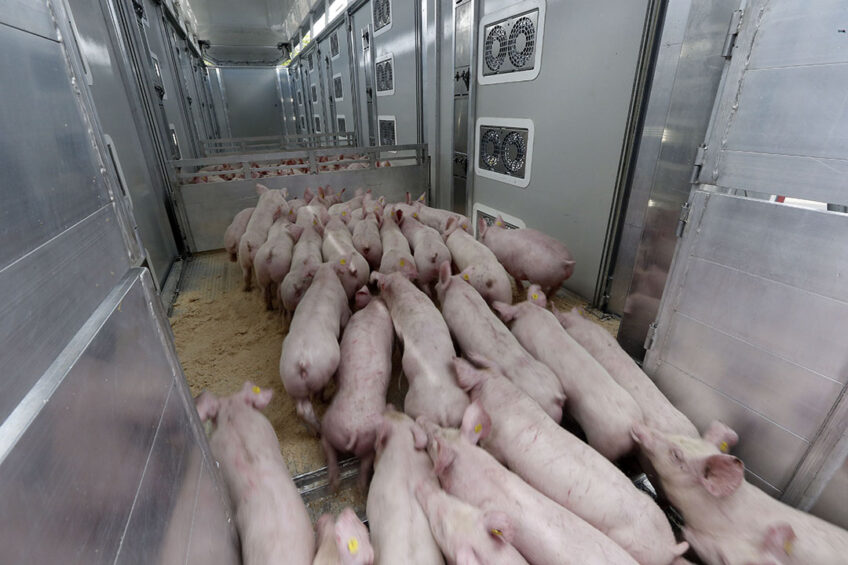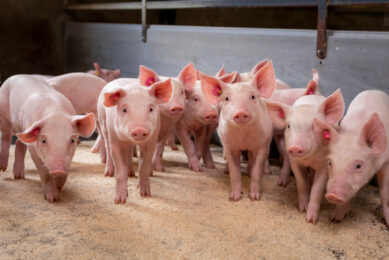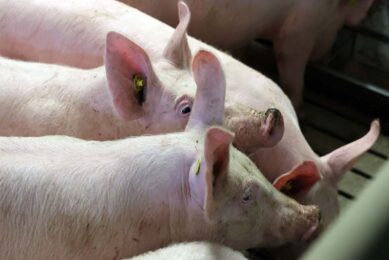Guidelines to kill PEDV and PRRSV in livestock trucks

Porcine reproductive and respiratory syndrome (PRRSV) and porcine epidemic diarrhea virus (PEDV) are major issues for swine producers. These diseases affect pigs’ welfare and production performance. Biosecurity procedures are the first line of defense to mitigate the risk of PRRSV, PEDV and many other diseases entering the herd.
Transport trucks are a potential risk of infection, so strict guidelines should be in place for cleaning, disinfecting, and drying vehicles used to transport pigs, including trucks and trailers returning from processing plants, other farms and buying stations.
 Properly cleaning trucks and trailers
Properly cleaning trucks and trailers
It is necessary to properly clean trucks and trailers to maximise the protection level from disease. Since PRRSV and PEDV can be spread by feces and bodily fluids from infected pigs, any organic matter left in the trailer has the potential to spread virus. Therefore, the first step is to scrape or shovel bedding to remove manure. Then, both the truck and trailer need to be washed carefully. Always consider a safe distance from the swine site to decrease the pigs’ exposure to dust, fomites, splashed or aerosolised organic matter from the truck.
 Removing biofilm layers on flat surfaces and cracks
Removing biofilm layers on flat surfaces and cracks
Apply a detergent during power washing to remove all visible organic matter on the trailer and the truck, and to initiate the destruction of pathogens such as bacteria, virus, and parasites. Be aware that a biofilm layer that is not visible to the human eye can develop over time and can harbour pathogens. It is recommended to use an acid solvent to remove the biofilm layer and to ensure that all pathogens are destroyed, including those suspended in biofilm layers on flat surfaces or trapped in small cracks, hinges, and concealed areas.
Wash outside of the truck from the roof downward along the side panels and the undercarriage
 Systematically breaking down various surfaces
Systematically breaking down various surfaces
It is important to systematically break down various surfaces, while washing the trailer and truck. Wash outside of the truck from the roof downward along the side panels and the undercarriage. When cleaning inside the trailer, work from front to back, start from the ceiling and then downward along walls and finally the floor. Examine any movable gates or ramps to ensure the entire area has been washed. Finally rinse the entire truck and trailer to remove all visible organic matter.
 Applying an effective disinfectant
Applying an effective disinfectant
Apply an effective disinfectant using a hydrafoamer to increase contact time and more thorough disinfection of the truck. Follow all the manufacturer’s safety recommendations, use protective gloves and eye and face protection in a well-ventilated area. When using a detergent that contains ammonia or is acidic, avoid following it with a chlorinated disinfectant as it may irritate membranes and cause breathing problems.
 Removing moisture properly
Removing moisture properly
Remove moisture through proper drainage and dry the trailer using forced heated air or baking to destroy pathogens. It is recommended to heat the trailer’s inside to above 150° F for at least 10 minutes to effectively destroy pathogens. Raise the front end of the trailer to make water run out the back of the trailer and allow air flow throughout the trailer to reduce drying time.
 Disinfecting cab, floor mats, and floorboards
Disinfecting cab, floor mats, and floorboards
The last step in the cleaning process is washing, disinfecting and drying the cab, floor mats, floorboards, all equipment, sorting boards, rattle paddles, the undercarriage, wheels and tires. Finally, the drivers need to wash their hands or apply hand sanitizer, then remove and properly dispose of plastic booties before entering the cleaned cab of their truck.











